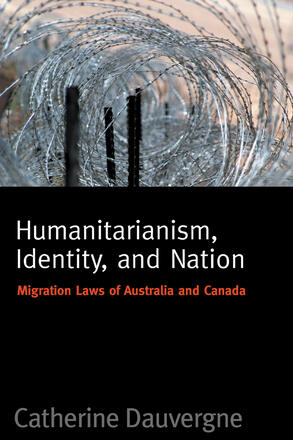
Humanitarianism, Identity, and Nation
Migration Laws in Canada and Australia
Dauvergne examines the relationship between migration laws and national identities and highlights the role of humanitarianism in this linkage.
La description
Australia and Canada have each sought international reputations as humanitarian do-gooders, especially in the area of refugee admissions. This book traces the connections between the nation-building tradition of immigration and the challenge of admitting people who do not reflect the national interest of the twenty-first century. In a detailed consideration of how refugees and others in need are admitted to Australia and Canada, Catherine Dauvergne links humanitarianism and national identity to explain the current shape of the law. Humanitarianism, Identity, and Nation is a welcome antidote to economic critiques of immigration, and a thoughtful contribution to rights talk.
Reviews
The strength of Dauvergne’s book lies in its bold attempt to connect the identity construction of the nation/state to migration laws. In doing so, she shifts the discourse of migration laws from its economic framework to a humanitarian one. This book is written in a fluid and accessible style that most readers will appreciate. In conclusion, this is an insightful text that can be used effectively for teaching purposes at the senior undergraduate level in the disciplines of sociology, law, social work, and political science. This text is also an excellent resource for research projects in the area of human right and migration laws.
- Parbattie Ramsarran, Department of Sociology, York University
Catherine Dauvergne’s study of the relationship between the migration laws of Australia and Canada and their national identities by no means sits on the uncritical side of this fence. One could say that this is due to her explicit use of critical theory. After surveying the work of liberal theorists on questions of migration, she situates herself within a critical school. She draws on Peter Fitzpatrick’s and Martha Minow’s insights regarding the dichotomous pairings and the inherent instability within liberal rights discourses and concepts (pp. 25, 213). But her nuances analysis is more than a use of, or a borrowing from, the pages of critical theory. Indeed, one of the attractive features of this book is its originality.
- Jonathan Klaaren, Professor of Law, The University of the Witwatersrand, Johannesburg